Wearable Bio-Inspired Pulsating-Flow Cooling for Live Garments Based on a Novel Design of Ferrofluid Micro-Valve †
Abstract
:1. Introduction
Ferrofluid Micro-Valves
2. Models
2.1. Model of Cooling System
2.2. Model of Ferrofluid Valve
3. Methods
3.1. Ferrofluid-Valve Design
3.2. Design of Cooling Systems
3.3. Experimental Set-Up
3.4. FEM Simulation
4. Implementation and Results
4.1. Ferrofluid Valve
4.2. CFD Analysis of Valve Actions
4.3. Optimisation of the Sweeping Frequency
5. Discussion
6. Conclusions
Author Contributions
Funding
Data Availability Statement
Acknowledgments
Conflicts of Interest
Abbreviations
| ID | Inner diameter |
| OD | Outer diameter |
| P&ID | Piping and instrumentation diagram |
| FEM | Finite element method |
| LCG | Liquid cooling garment |
| CFD | Computational fluid dynamics |
References
- Luo, M.; Arens, E.; Zhang, H.; Ghahramani, A.; Wang, Z. Thermal comfort evaluated for combinations of energy-efficient personal heating and cooling devices. Build. Environ. 2018, 143, 206–216. [Google Scholar] [CrossRef] [Green Version]
- Mokhtari Yazdi, M.; Sheikhzadeh, M. Personal cooling garments: A review. J. Text. Inst. 2014, 105, 1231–1250. [Google Scholar] [CrossRef]
- Bo-an, Y.; Yi-Lin, K.; Yi, L.; Chap-Yung, Y.; Qing-wen, S. Thermal regulating functional performance of PCM garments. Int. J. Cloth. Sci. Technol. 2004, 16, 84–96. [Google Scholar] [CrossRef]
- Bartkowiak, G.; Dąbrowska, A.; Włodarczyk, B. Construction of a garment for an integrated liquid cooling system. Text. Res. J. 2015, 85, 1809–1816. [Google Scholar] [CrossRef]
- Taylor, C.E.; Lau, S.F. Thermo-Voltaic Personal Cooling/Heating Device. US Patent 6,125,636, 3 November 2000. [Google Scholar]
- Ernst, T.C. Design, Fabrication and Testing of a Wearable Cooling System. Ph.D. Thesis, Georgia Institute of Technology, Atlanta, GA, USA, 2005. [Google Scholar]
- Gao, C.; Kuklane, K.; Wang, F.; Holmér, I. Personal cooling with phase change materials to improve thermal comfort from a heat wave perspective. Indoor Air 2012, 22, 523–530. [Google Scholar] [CrossRef] [PubMed]
- Robinson, P.J. On the definition of a heat wave. J. Appl. Meteorol. Climatol. 2001, 40, 762–775. [Google Scholar] [CrossRef]
- Anderson, G.B.; Bell, M.L. Heat waves in the United States: Mortality risk during heat waves and effect modification by heat wave characteristics in 43 US communities. Environ. Health Perspect. 2011, 119, 210–218. [Google Scholar] [CrossRef] [Green Version]
- Smoyer-Tomic, K.E.; Kuhn, R.; Hudson, A. Heat wave hazards: An overview of heat wave impacts in Canada. Nat. Hazards 2003, 28, 465–486. [Google Scholar] [CrossRef]
- Perez, S.A.; Charles, J.B.; Fortner, G.W.; Hurst, V.; Meck, J.V. Cardiovascular effects of anti-G suit and cooling garment during space shuttle re-entry and landing. Aviat. Space Environ. Med. 2003, 74, 753–757. [Google Scholar]
- Meng, Y.; Zhang, Z.; Wu, H.; Wu, R.; Wu, J.; Wang, H.; Pei, Q. A cascade electrocaloric cooling device for large temperature lift. Nat. Energy 2020, 5, 996–1002. [Google Scholar] [CrossRef]
- Hong, S.; Gu, Y.; Seo, J.K.; Wang, J.; Liu, P.; Meng, Y.S.; Xu, S.; Chen, R. Wearable thermoelectrics for personalized thermoregulation. Sci. Adv. 2019, 5, eaaw0536. [Google Scholar] [CrossRef] [PubMed]
- Teunissen, L.P.; Wang, L.C.; Chou, S.N.; Huang, C.h.; Jou, G.T.; Daanen, H.A. Evaluation of two cooling systems under a firefighter coverall. Appl. Ergon. 2014, 45, 1433–1438. [Google Scholar] [CrossRef] [PubMed] [Green Version]
- Yifen, Q.; Jiang, N.; Wei, W.; Zhang, G.; Baoliang, X. Heat transfer of heat sinking vest with phase-change material. Chin. J. Aeronaut. 2011, 24, 720–725. [Google Scholar]
- Mokhtari Yazdi, M.; Sheikhzadeh, M.; Dabirzadeh, A.; Chavoshi, E. Modeling the efficiency and heat gain of a phase change material cooling vest: The effect of ambient temperature and outer isolation. J. Ind. Text. 2016, 46, 436–454. [Google Scholar] [CrossRef]
- Gao, C.; Kuklane, K.; Holmér, I. Cooling vests with phase change material packs: The effects of temperature gradient, mass and covering area. Ergonomics 2010, 53, 716–723. [Google Scholar] [CrossRef] [PubMed]
- Kou, Y.; Sun, K.; Luo, J.; Zhou, F.; Huang, H.; Wu, Z.S.; Shi, Q. An intrinsically flexible phase change film for wearable thermal managements. Energy Storage Mater. 2021, 34, 508–514. [Google Scholar] [CrossRef]
- Zhang, H.; Ly, K.C.; Liu, X.; Chen, Z.; Yan, M.; Wu, Z.; Wang, X.; Zheng, Y.; Zhou, H.; Fan, T. Biologically inspired flexible photonic films for efficient passive radiative cooling. Proc. Natl. Acad. Sci. USA 2020, 117, 14657–14666. [Google Scholar] [CrossRef]
- Bartkowiak, G.; Dabrowska, A.; Marszalek, A. Assessment of an active liquid cooling garment intended for use in a hot environment. Appl. Ergon. 2017, 58, 182–189. [Google Scholar] [CrossRef]
- Cao, H.; Branson, D.H.; Peksoz, S.; Nam, J.; Farr, C.A. Fabric selection for a liquid cooling garment. Text. Res. J. 2006, 76, 587–595. [Google Scholar] [CrossRef]
- Nyberg, K.L.; Diller, K.R.; Wissler, E.H. Model of human/liquid cooling garment interaction for space suit automatic thermal control. J. Biomech. Eng. 2001, 123, 114–120. [Google Scholar] [CrossRef]
- Xu, X. Multi-loop control of liquid cooling garment systems. Ergonomics 1999, 42, 282–298. [Google Scholar] [CrossRef]
- Luk, P.C.; Tang, J. Wearable Bio-Inspired Pulsating Flow Cooling for Live Garments. In Proceedings of the 2022 IEEE International Instrumentation and Measurement Technology Conference (I2MTC), Ottawa, ON, Canada, 16–19 May 2022; pp. 1–6. [Google Scholar]
- Olaru, R.; Petrescu, C.; Hertanu, R. A novel double-action actuator based on ferrofluid and permanent magnets. J. Intell. Mater. Syst. Struct. 2012, 23, 1623–1630. [Google Scholar] [CrossRef]
- Garg, H.; Mehta, J.; Kumar, R. Performance study of magnetic cooling system using kerosene based ferrofluid under magnetic field effect. In Proceedings of the 2015 2nd International Conference on Recent Advances in Engineering & Computational Sciences (RAECS), Chandigarh, India, 21–22 December 2015; pp. 1–5. [Google Scholar]
- Kim, J.H.; Seo, H.S.; Kim, Y.J. Thermal-flow characteristics of ferrofluids in a rotating eccentric cylinder under external magnetic force. Micromachines 2018, 9, 457. [Google Scholar] [CrossRef] [PubMed] [Green Version]
- Özbey, A.; Karimzadehkhouei, M.; Yalçın, S.E.; Gozuacik, D.; Koşar, A. Modeling of ferrofluid magnetic actuation with dynamic magnetic fields in small channels. Microfluid. Nanofluid. 2015, 18, 447–460. [Google Scholar] [CrossRef]
- Mehta, J.S.; Kumar, R.; Kumar, H.; Garg, H. Numerical Investigation and Comparison of Thermal Performance of Ferrofluid in Different Closed Loop Configurations. In Proceedings of the Journal of Physics: Conference Series. IOP Publishing, Kurukshetra, India, 18–22 February 2019; Volume 1240, p. 012056. [Google Scholar]
- Finlayson, B. Modeling a ferrofluid in a rotating magnetic field. In Proceedings of the COMSOL Users’ Conference, Boston, MA, USA, 4–6 October 2007. [Google Scholar]
- Mateev, V.; Terzova, A.; Marinova, I. Design analysis of electromagnetic actuator with ferrofluid. In Proceedings of the 2014 18th International Symposium on Electrical Apparatus and Technologies (SIELA), Bourgas, Bulgaria, 29–31 May 2014; pp. 1–4. [Google Scholar]
- Liu, K.; Han, L.; Tang, P.; Yang, K.; Gan, D.; Wang, X.; Wang, K.; Ren, F.; Fang, L.; Xu, Y.; et al. An anisotropic hydrogel based on mussel-inspired conductive ferrofluid composed of electromagnetic nanohybrids. Nano Lett. 2019, 19, 8343–8356. [Google Scholar] [CrossRef]
- Wang, W.; Timonen, J.V.; Carlson, A.; Drotlef, D.M.; Zhang, C.T.; Kolle, S.; Grinthal, A.; Wong, T.S.; Hatton, B.; Kang, S.H.; et al. Multifunctional ferrofluid-infused surfaces with reconfigurable multiscale topography. Nature 2018, 559, 77–82. [Google Scholar] [CrossRef] [PubMed] [Green Version]
- Giwa, S.; Sharifpur, M.; Goodarzi, M.; Alsulami, H.; Meyer, J. Influence of base fluid, temperature, and concentration on the thermophysical properties of hybrid nanofluids of alumina–ferrofluid: Experimental data, modeling through enhanced ANN, ANFIS, and curve fitting. J. Therm. Anal. Calorim. 2021, 143, 4149–4167. [Google Scholar] [CrossRef]
- Li, C.; Wu, S.; Luk, P.C.K.; Gu, M.; Jiao, Z. Enhanced bandwidth nonlinear resonance electromagnetic human motion energy harvester using magnetic springs and ferrofluid. IEEE/ASME Trans. Mechatron. 2019, 24, 710–717. [Google Scholar] [CrossRef] [Green Version]
- Ravaud, R.; Lemarquand, G.; Lemarquand, V. Mechanical properties of ferrofluid applications: Centering effect and capacity of a seal. Tribol. Int. 2010, 43, 76–82. [Google Scholar] [CrossRef] [Green Version]
- Rogge, H.; Erbe, M.; Buzug, T.M.; Lüdtke-Buzug, K. Simulation of the magnetization dynamics of diluted ferrofluids in medical applications. Biomed. Tech. Eng. 2013, 58, 601–609. [Google Scholar] [CrossRef]
- Nepomnyashchaya, E.; Velichko, E.; Pleshakov, I.; Aksenov, E.; Savchenko, E. Investigation of ferrofluid nanostructure by laser light scattering: Medical applications. In Proceedings of the Journal of Physics: Conference Series, Torino, Italy, 24–26 October 2016; Volume 841, p. 012020. [Google Scholar]
- Chhattal, M.; Tonggang, L.; Kun, Y.; Xin, L.; Guangsheng, L. Development of a tribotester for investigation of ferrofluids lubrication performance on the thrust pad bearing. Tribol. Trans. 2020, 63, 1095–1102. [Google Scholar] [CrossRef]
- Raj, K.; Moskowitz, B.; Casciari, R. Advances in ferrofluid technology. J. Magn. Magn. Mater. 1995, 149, 174–180. [Google Scholar] [CrossRef]
- Ravaud, R.; Pinho, M.; Lemarquand, G.; Dauchez, N.; Génevaux, J.M.; Lemarquand, V.; Brouard, B. Radial stiffness of a ferrofluid seal. IEEE Trans. Magn. 2009, 45, 4388–4390. [Google Scholar] [CrossRef] [Green Version]
- Ganguly, R.; Gaind, A.P.; Sen, S.; Puri, I.K. Analyzing ferrofluid transport for magnetic drug targeting. J. Magn. Magn. Mater. 2005, 289, 331–334. [Google Scholar] [CrossRef]
- Sheikholeslami, M.; Arabkoohsar, A.; Khan, I.; Shafee, A.; Li, Z. Impact of Lorentz forces on Fe3O4-water ferrofluid entropy and exergy treatment within a permeable semi annulus. J. Clean. Prod. 2019, 221, 885–898. [Google Scholar] [CrossRef]
- Kurtoğlu, E.; Bilgin, A.; Şeşen, M.; Yıldız, M.; Acar, H.F.Y.; Koşar, A. Ferrofluid actuation with varying magnetic fields for micropumping applications. Microfluid. Nanofluid. 2012, 13, 683–694. [Google Scholar] [CrossRef]
- Doganay, S.; Cetin, L.; Ezan, M.A.; Turgut, A. A rotating permanent magnetic actuator for micropumping devices with magnetic nanofluids. J. Micromech. Microeng. 2020, 30, 075012. [Google Scholar] [CrossRef]
- Liu, B.; Zhang, Z.; Yang, J.; Yang, J.; Li, D. A rotary ferrofluidic vane micropump with C shape baffle. Sens. Actuators Chem. 2018, 263, 452–458. [Google Scholar] [CrossRef]
- Rana, K.P.S.; Kumar, V.; Dagar, A.K.; Chandel, A.; Kataria, A. FPGA implementation of steinhart–hart equation for accurate thermistor linearization. IEEE Sens. J. 2018, 18, 2260–2267. [Google Scholar] [CrossRef]
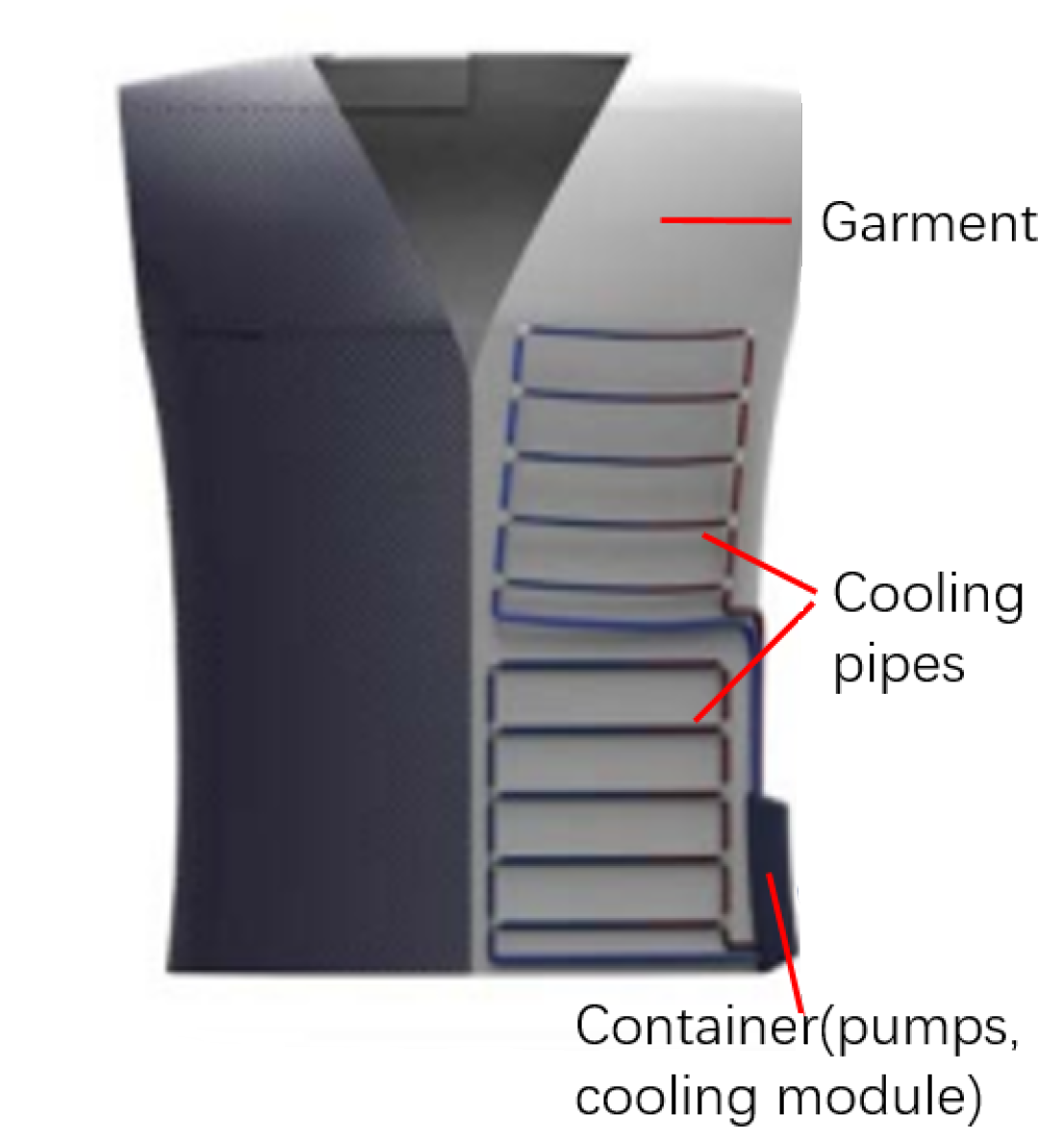

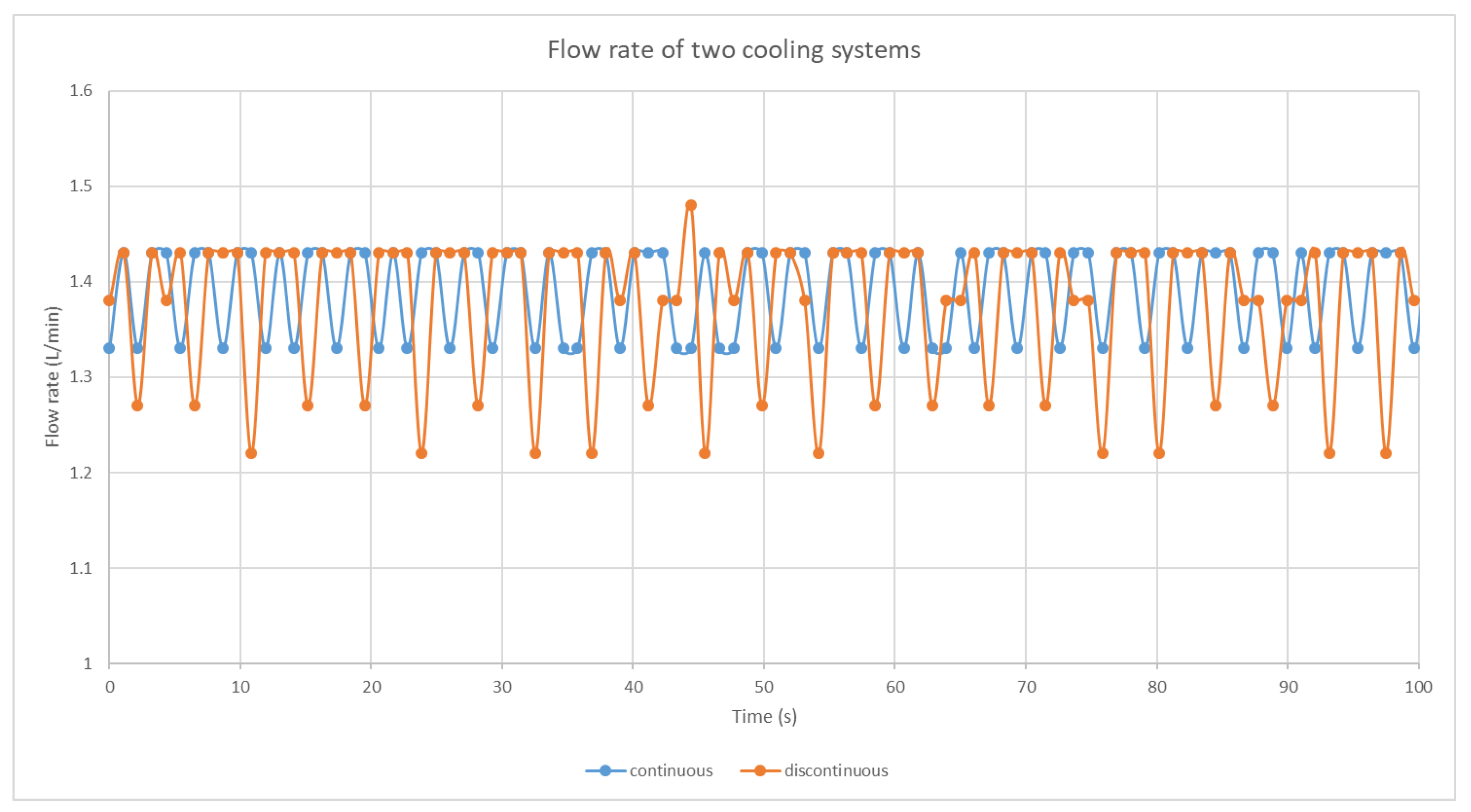

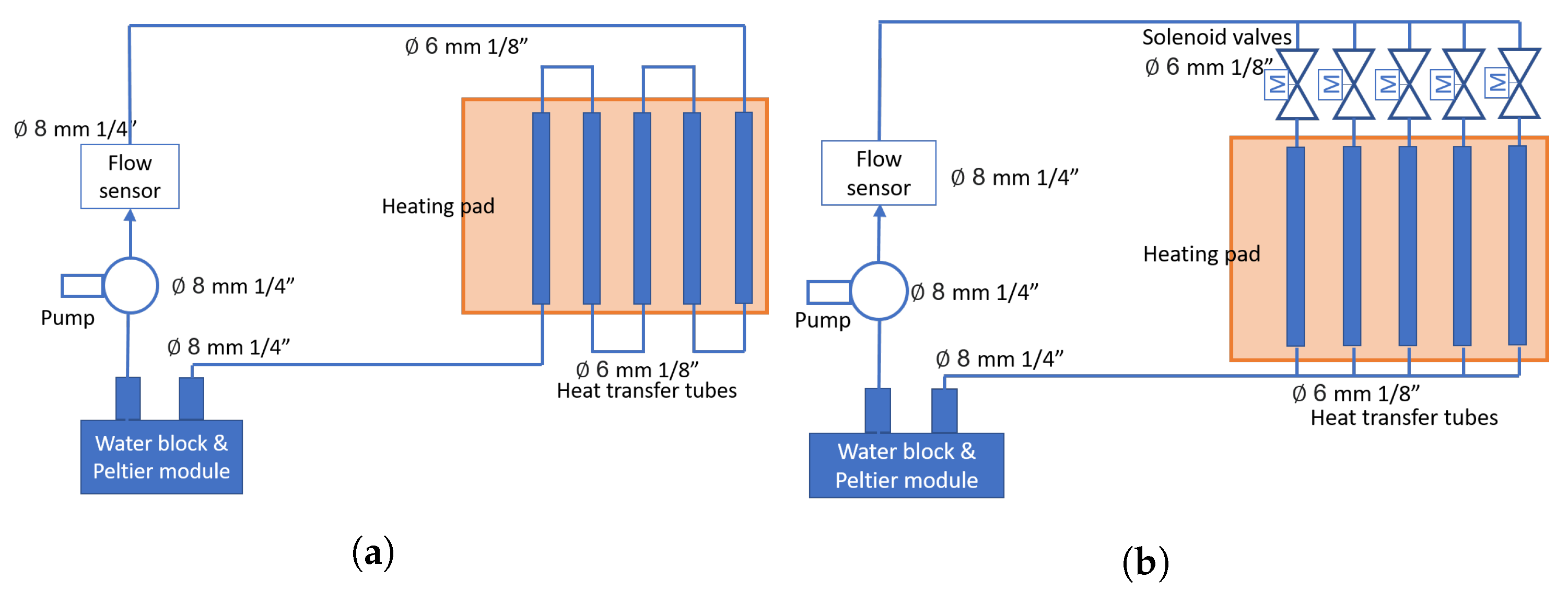
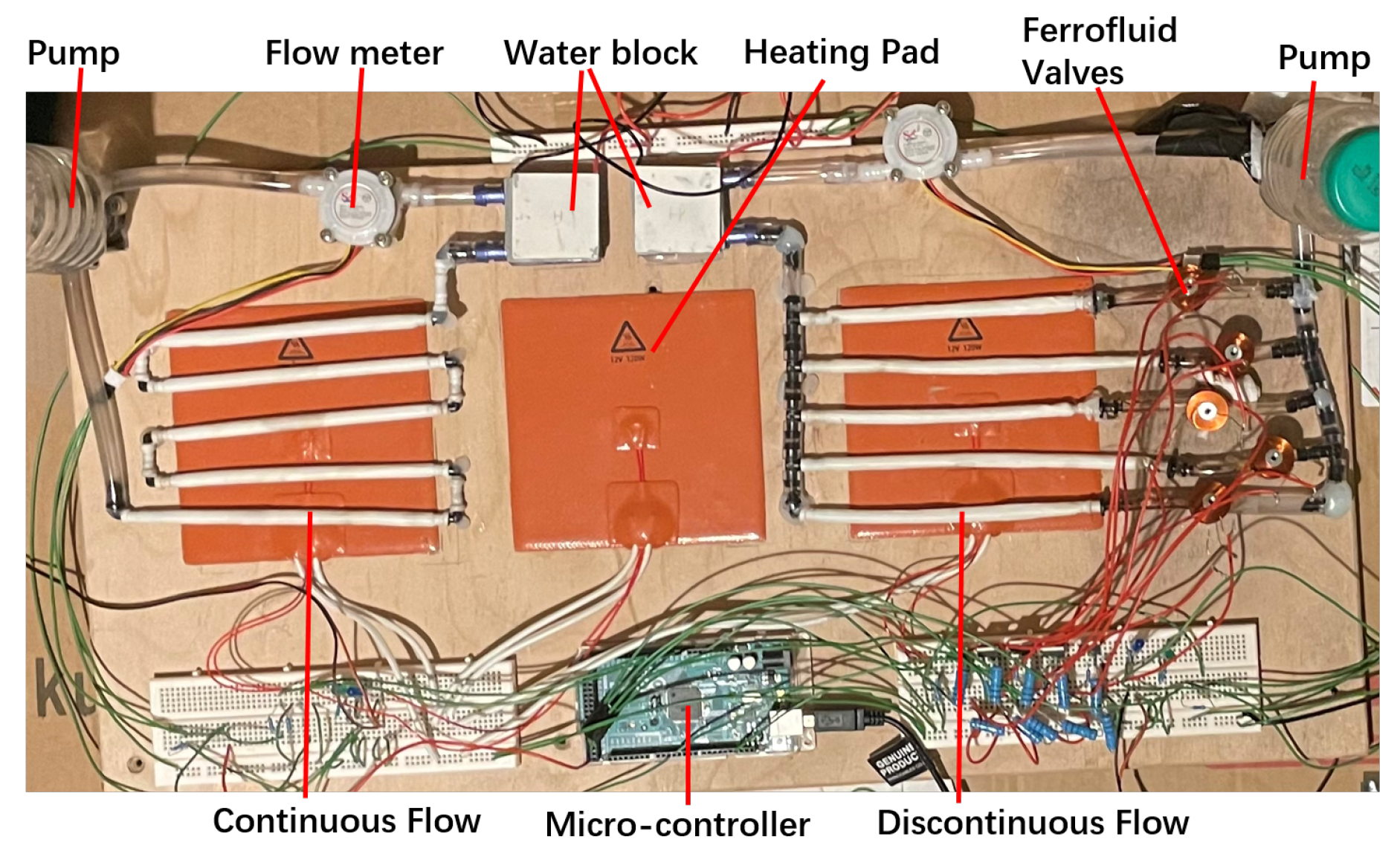

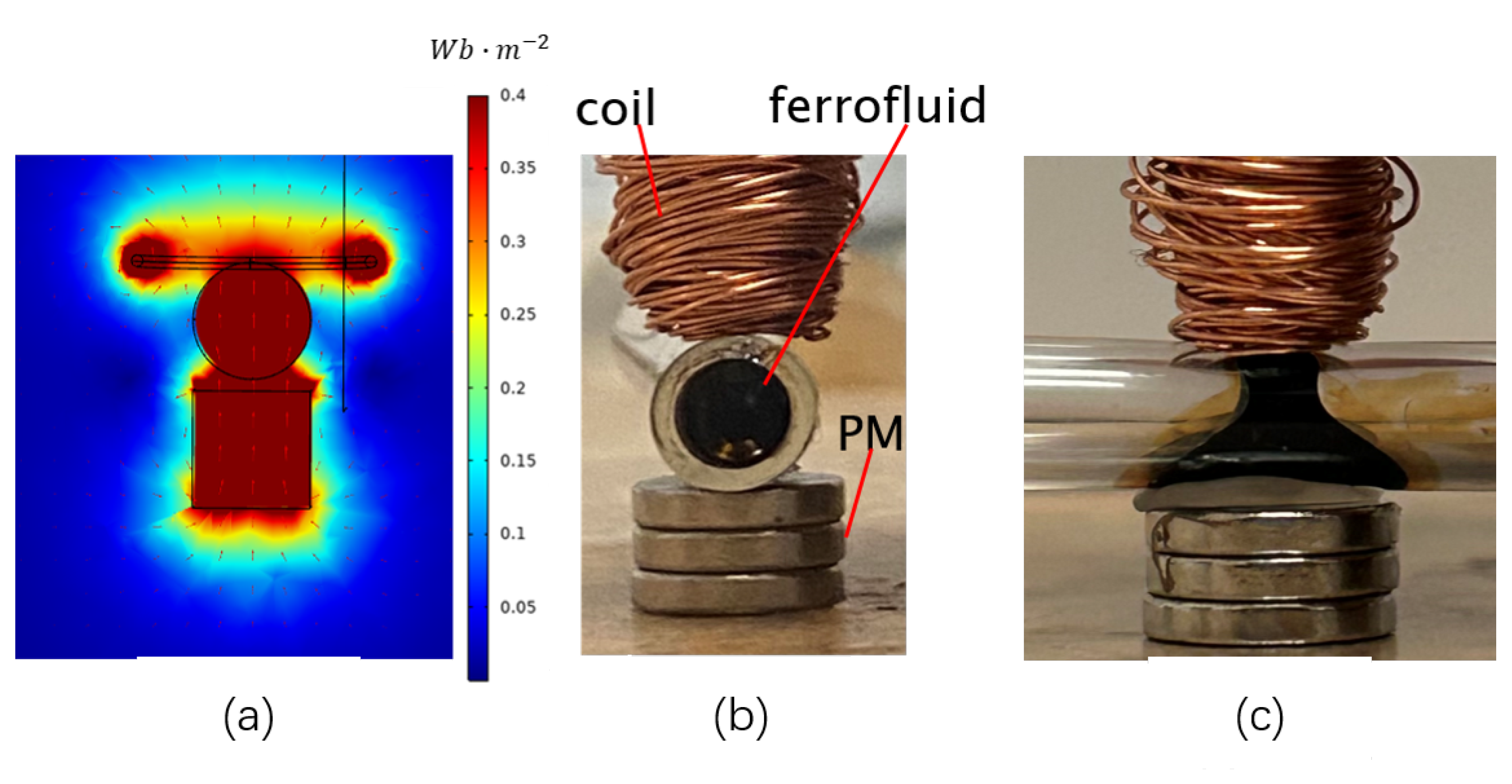
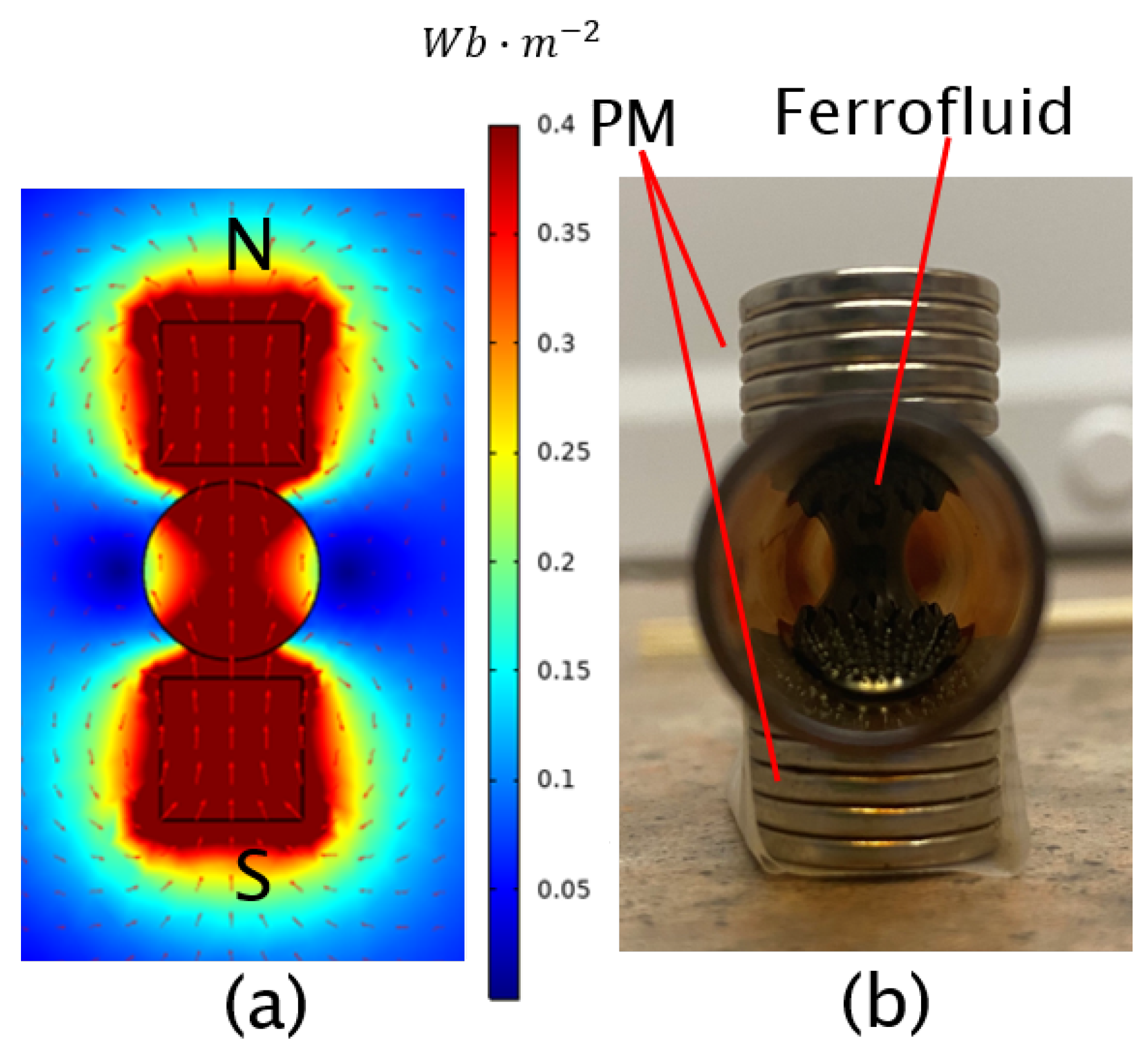

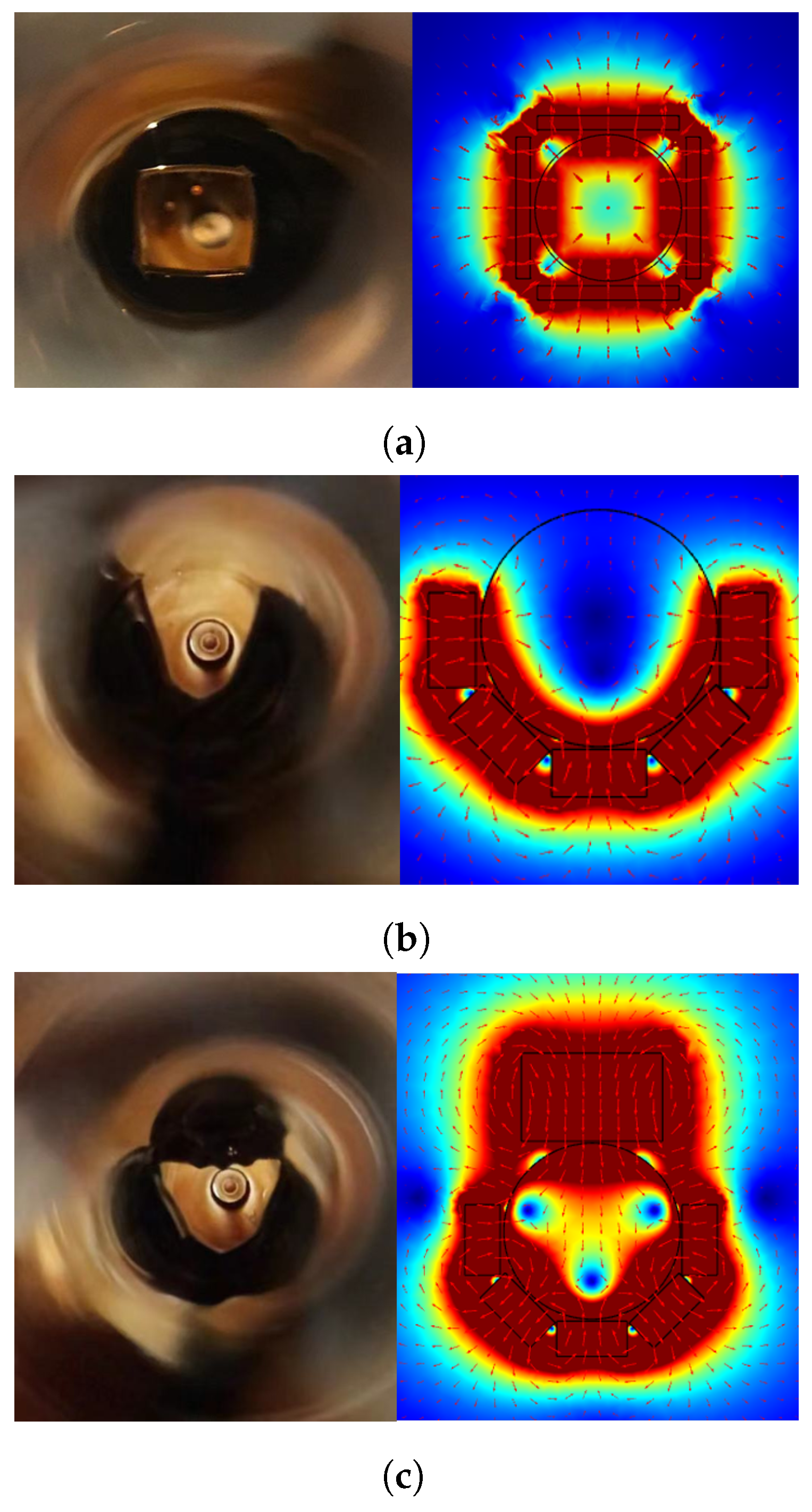
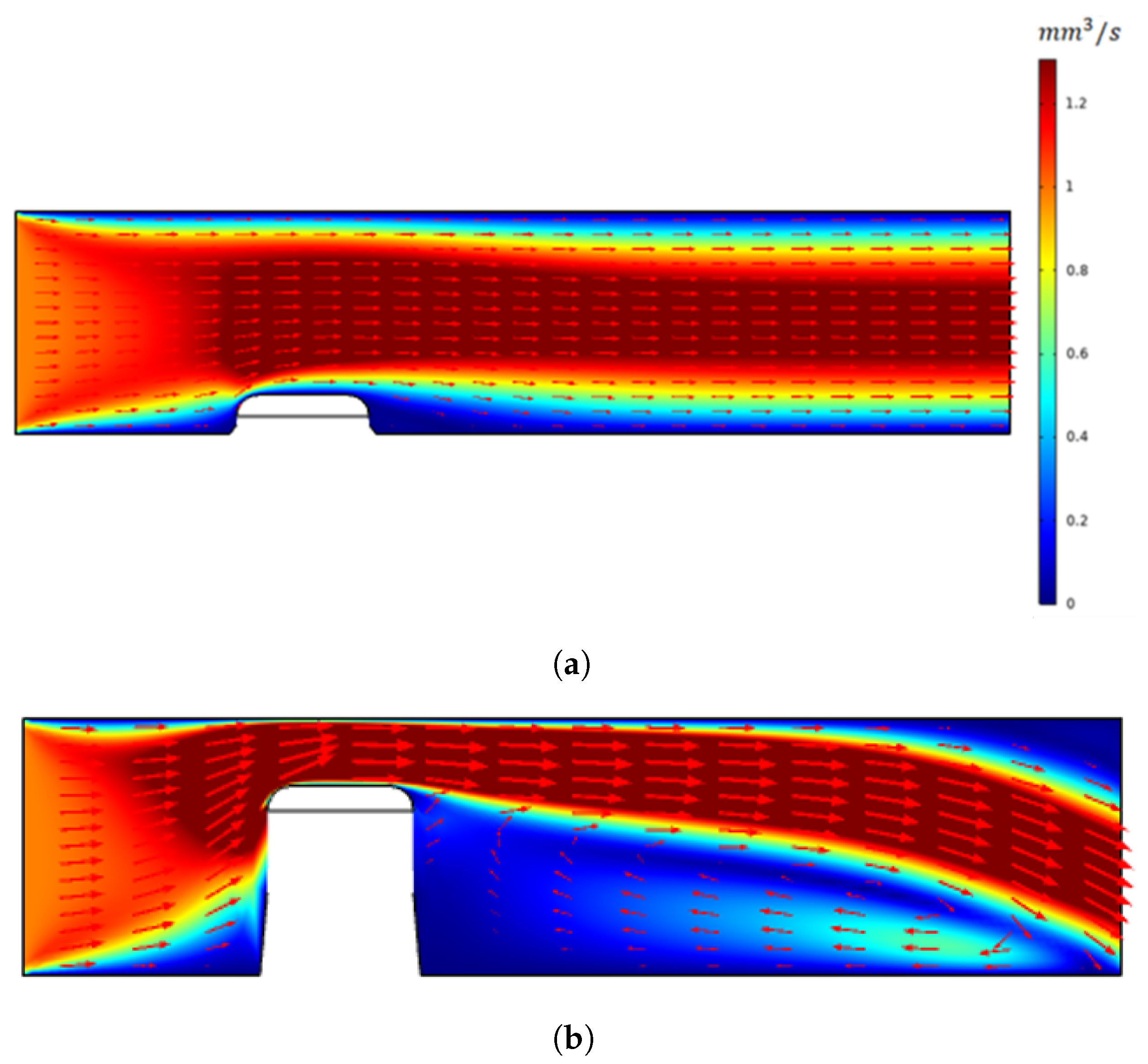
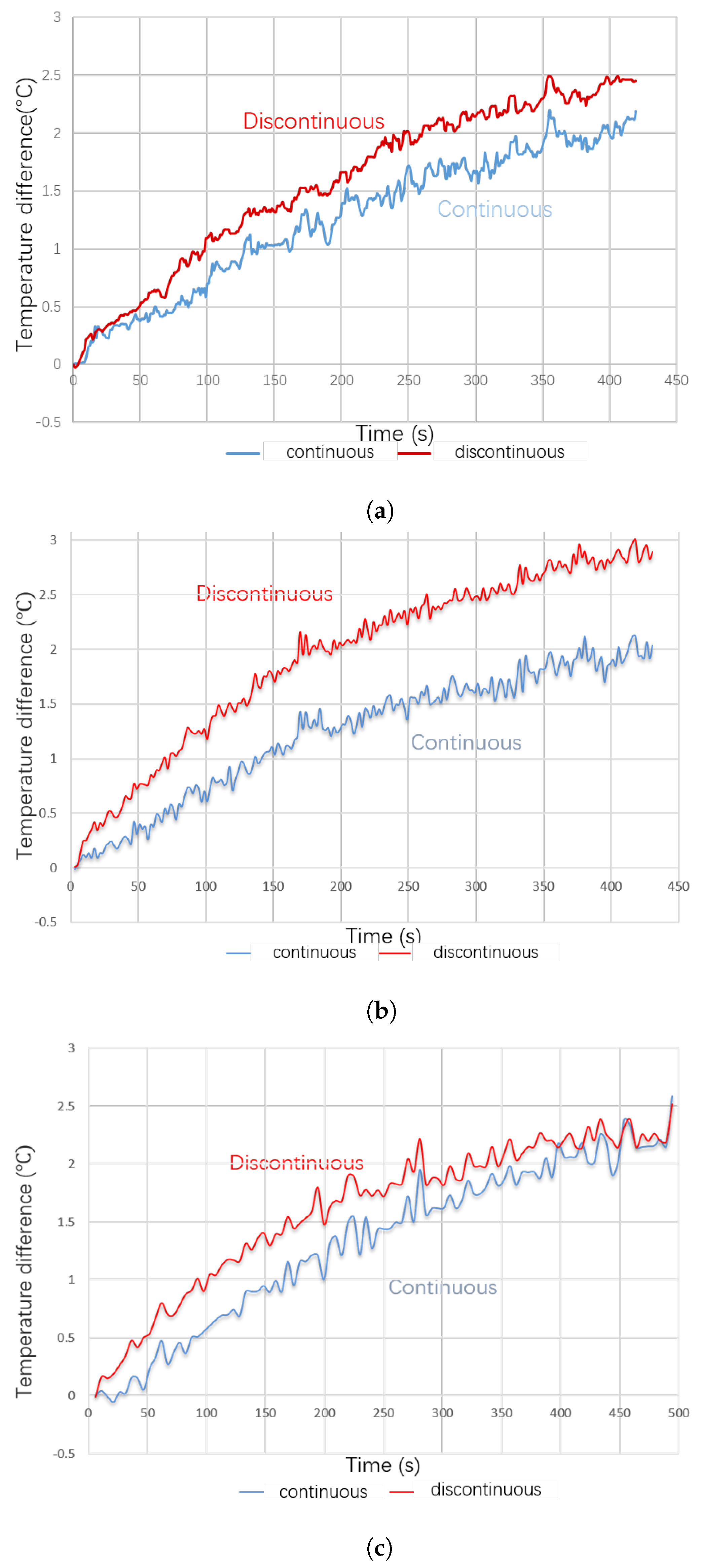
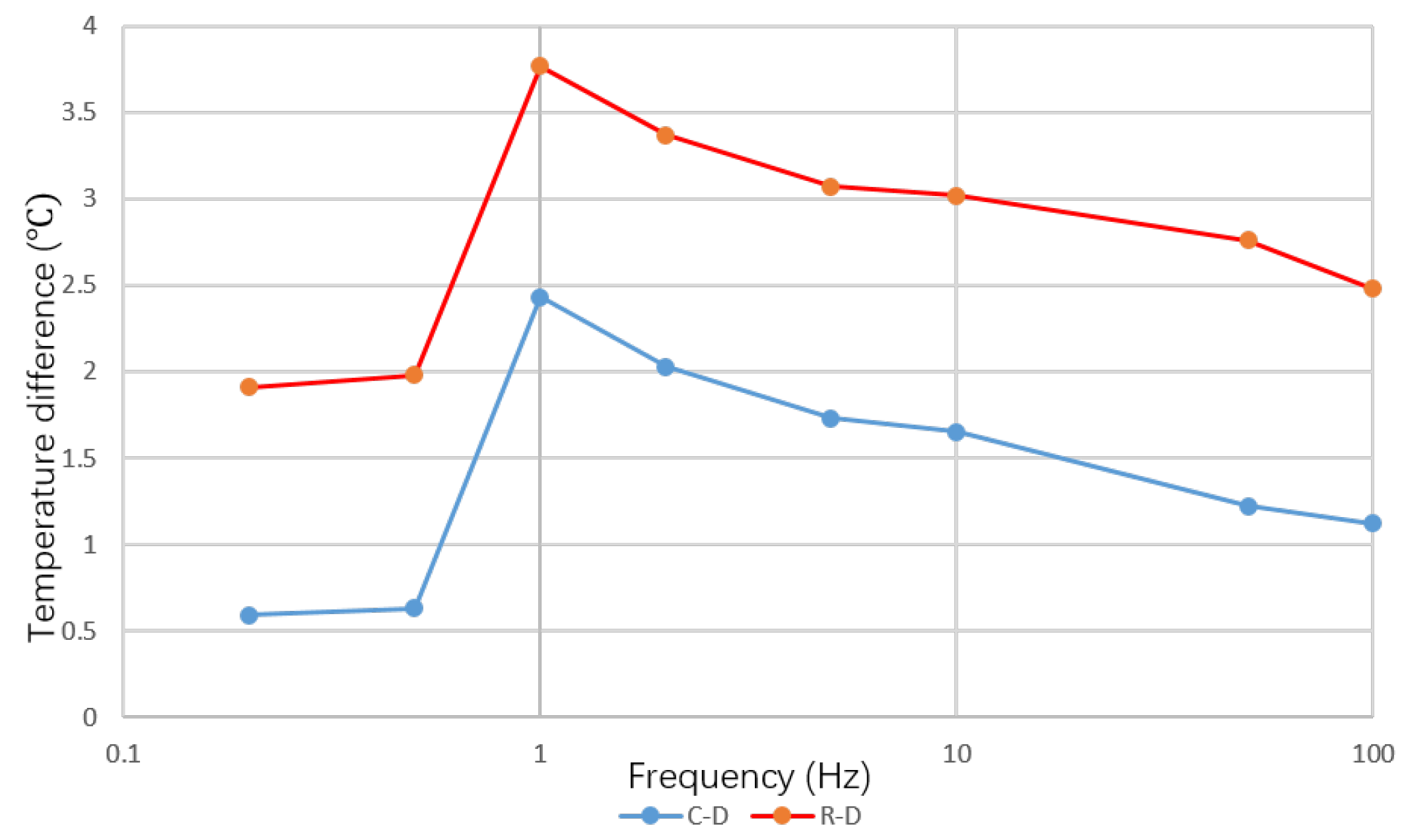
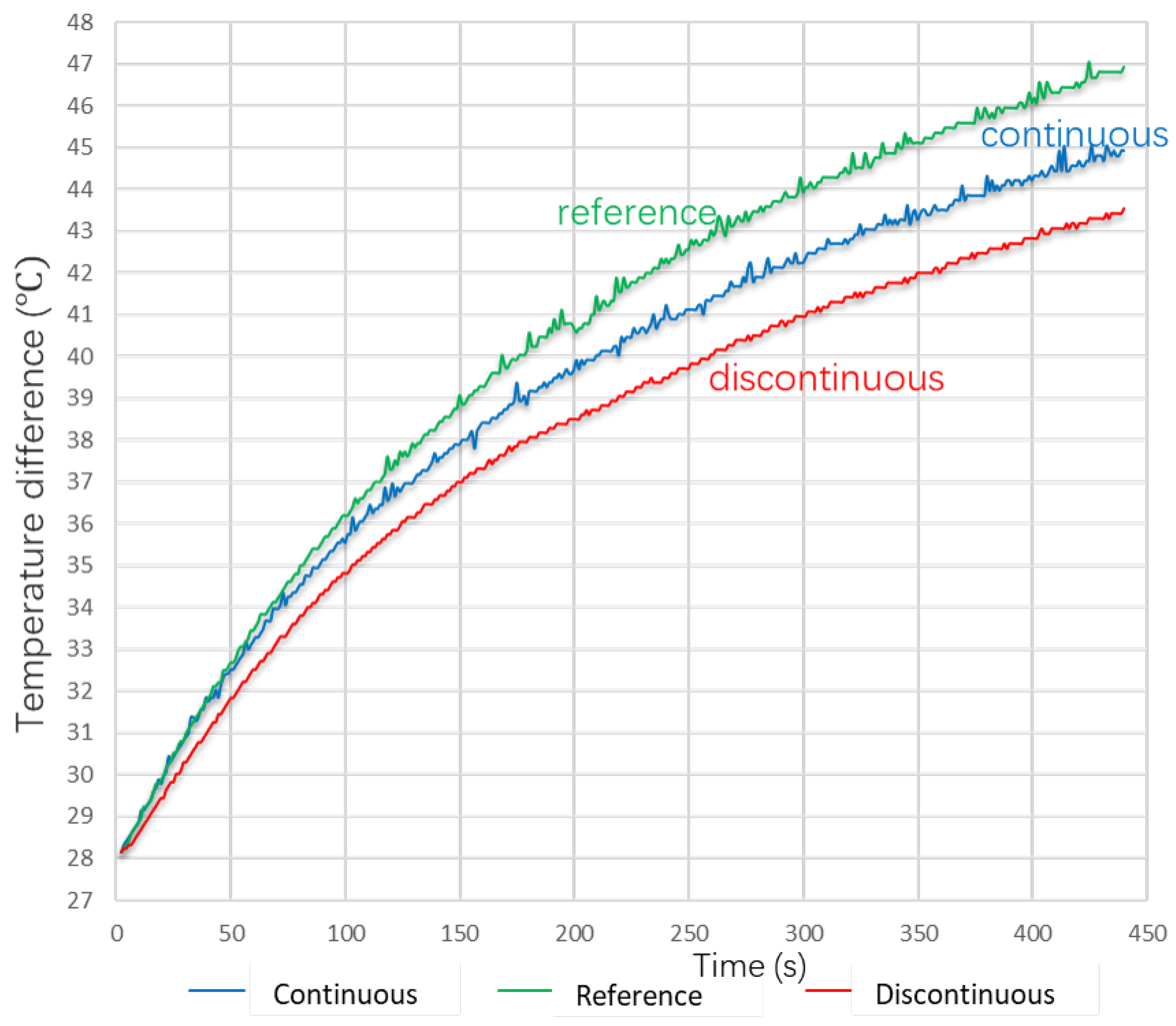
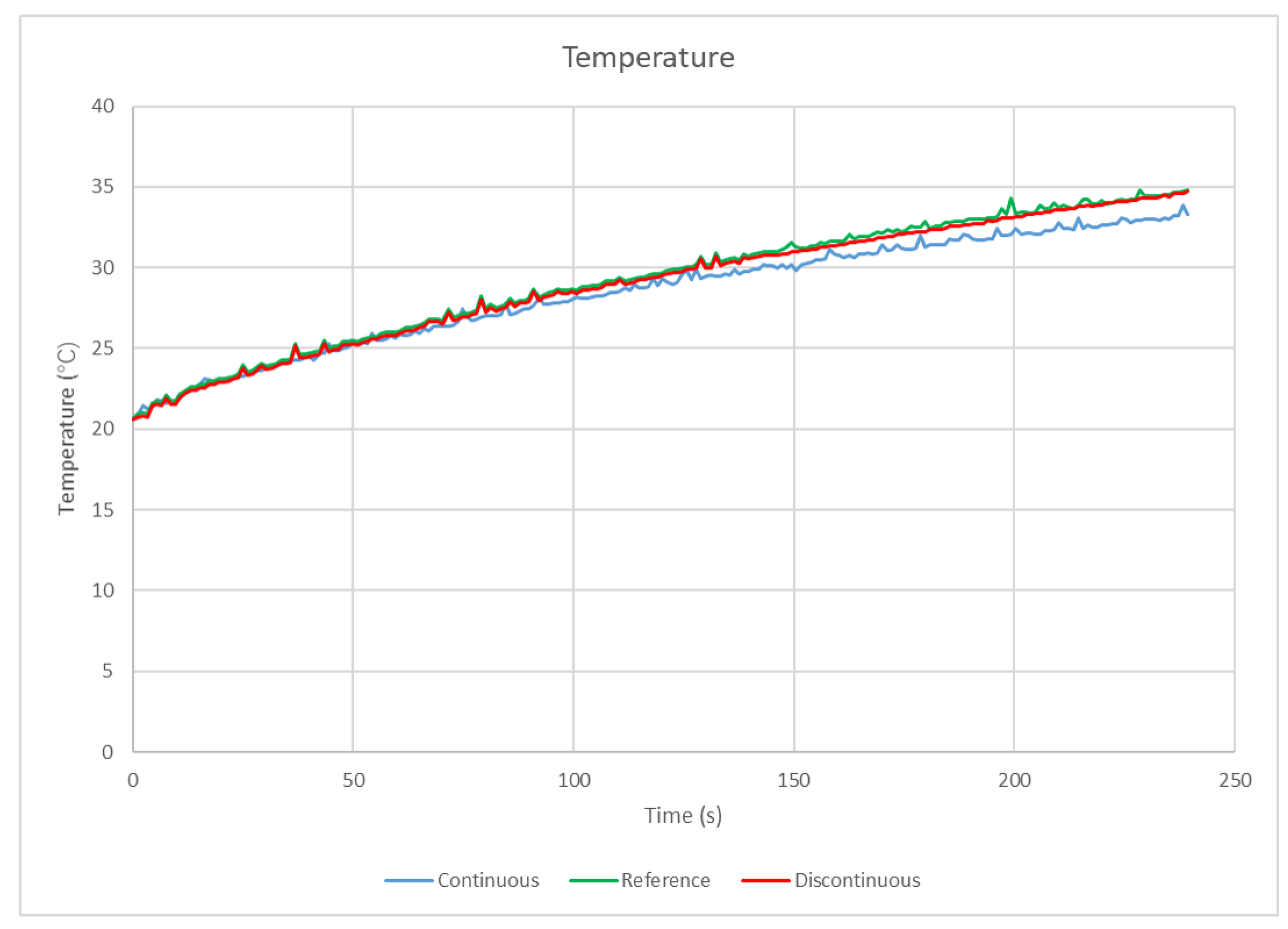
| Symbol | Parameter | Value | Units |
|---|---|---|---|
| density of ferrofluid | 1212 | kg/m | |
| density of FeO | 5240 | kg/m | |
| ∅ | volume fraction ratio | - | |
| density of water | 1000 | kg/m | |
| viscosity of water | Pa·s | ||
| relative permeability of ferrofluid | - | ||
| viscosity of ferrofluid | Pa·s | ||
| relative permeability of water | 1 | - | |
| relative permeability of FeO | - |
Publisher’s Note: MDPI stays neutral with regard to jurisdictional claims in published maps and institutional affiliations. |
© 2022 by the authors. Licensee MDPI, Basel, Switzerland. This article is an open access article distributed under the terms and conditions of the Creative Commons Attribution (CC BY) license (https://creativecommons.org/licenses/by/4.0/).
Share and Cite
Tang, J.; Luk, P. Wearable Bio-Inspired Pulsating-Flow Cooling for Live Garments Based on a Novel Design of Ferrofluid Micro-Valve. Energies 2022, 15, 8826. https://doi.org/10.3390/en15238826
Tang J, Luk P. Wearable Bio-Inspired Pulsating-Flow Cooling for Live Garments Based on a Novel Design of Ferrofluid Micro-Valve. Energies. 2022; 15(23):8826. https://doi.org/10.3390/en15238826
Chicago/Turabian StyleTang, Jiawei, and Patrick Luk. 2022. "Wearable Bio-Inspired Pulsating-Flow Cooling for Live Garments Based on a Novel Design of Ferrofluid Micro-Valve" Energies 15, no. 23: 8826. https://doi.org/10.3390/en15238826





